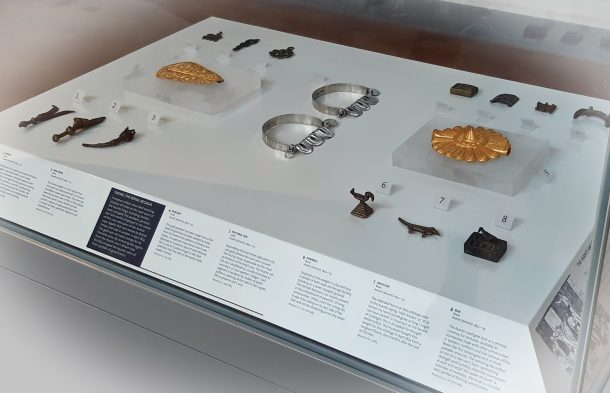
This week we installed a new, small display of Asante Goldweights in the Metalware Gallery (Room 116: a bridge gallery off the Ironwork Galleries). It shows small copper-alloy weights formerly used in the gold trade in Asante communities in what is now Ghana, West Africa. These weights are heavy with symbolism. Their designs carry mottoes championing honesty in trade and warnings about the watchful eyes of government. Accompanying them are several gold and silver items from the Asante court regalia. Together they attest to the importance of gold to the Asante economy. The V&A’s Metalwork collection contains only a small number of objects from sub-Saharan Africa. ‘Why is the Asante court regalia in the museum’s collection?’ you may wonder.
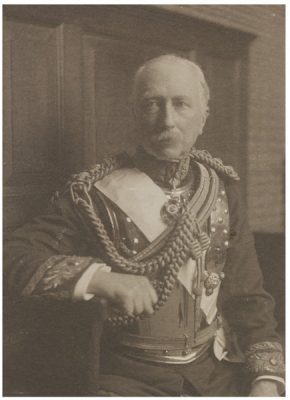
On 4 February 1874, following Asante efforts to protect the gold- and former slave-trading port of Elmina, British forces under the command of Major-General Sir Garnet Wolseley, launched a ‘punitive raid’ on the Asante state capital, Kumasi. Faced with unfavourable terms and overwhelming odds, the Asante king (Asantehene), Kofi Karikari, fled. To suppress any resurgence of Asante authority, Wolseley ordered troops to plunder the royal regalia and destroy the town. The gold was not taken simply for its financial value. By removing the regalia from the Asante court, Britain had stripped the Asante rulers of their symbols of government and denied them their authority to govern.
British newspapers clamoured to report the raid and Wolseley was welcomed back to Britain as a conquering hero. So ruthlessly efficient was Wolseley that, in Britain, the phrase, ‘Everything is all Sir Garnet’ entered the popular lexicon and, five years later, he was cited as the soldier lampooned in Gilbert and Sullivan’s The Pirates of Penzance as ‘the very model of a modern Major-General’.
The gold regalia was sold at auction where the V&A bought 13 items including the gold disk, silver anklets and gold pendant shown in the display. The museum, founded as an art school, selected each for its ornament which might be instructive for artists and product designers.
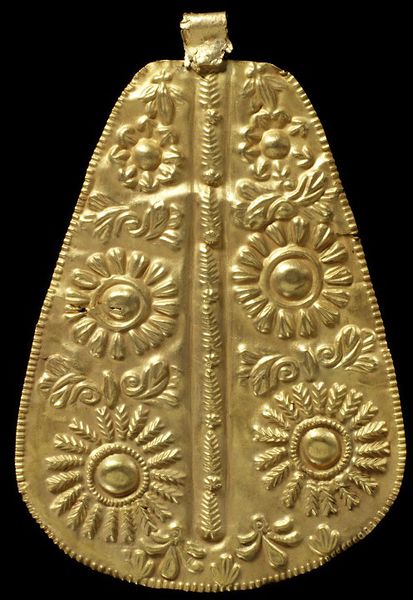
This gold pendant has been made from a thin sheet of gold that has been worked by hand from the reverse into patterns of flowers and leaves. A suspension loop shows how it was attached to a sword or stool of state (throne). This is one of 13 pieces of gold in the V&A collection from the raid on Kumasi.
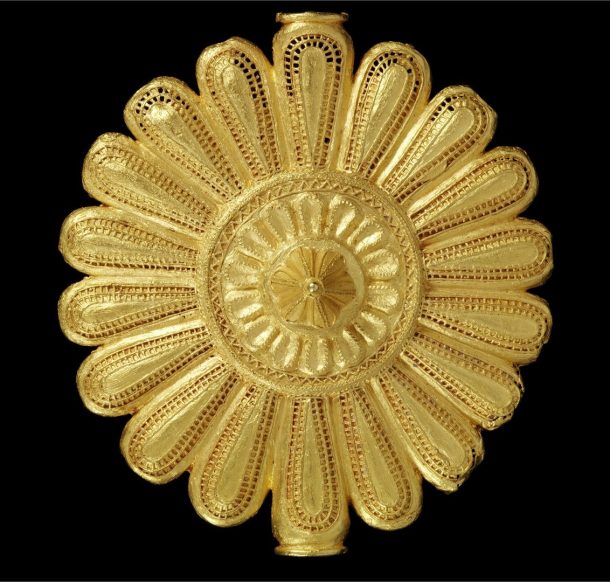
Resembling the bud of the fofoo plant, this cast gold pectoral disc was worn around the neck by those responsible for the ritual purification of the king’s soul. The Asante call the discs akrafokonmu, usually translated as ‘soul discs’ or ‘soul washers’ badges.’ Each segment is bordered by ‘ladder of death’ patterns, warning of the need to live a good life to preserve one’s soul.
Other parts of the regalia entered the Royal Collection and the British Museum, and electrotype reproductions of them were circulated among art schools in the country. The exhibition of A Collection of Gold and Other Objects from Ashanti at the South Kensington Museum (later the V&A) in 1874 attracted large crowds who viewed it in with a mixture of triumphant imperialism combined with artistic curiosity.
Asante Goldweights is a redisplay of objects shown in the same display case in 2007 to mark both the bicentenary of the Parliamentary abolition of the slave trade and 50 years of Ghanaian independence. Twelve years later, the language in the redisplay that explains the ownership history of this material has been strengthened. It reflects the developing discussions in museums around decolonisation and the need for us to be open about the V&A’s history as both an expression and a driver of 19th-century imperialism.
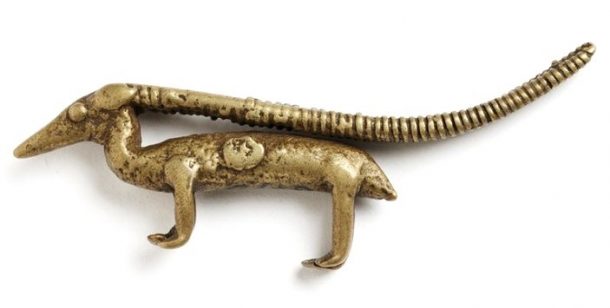
The extended horns on this antelope refer to the Asante saying, ‘Had I known’ or, ‘If I’d known my horns would grow so long I might not have started’. A visual pun on the benefit of hindsight, this is an appeal for thought before action. The museum bought this weight for 4s in April 1874 from a Sergeant Pearce, two months after the raid on Kumasi.
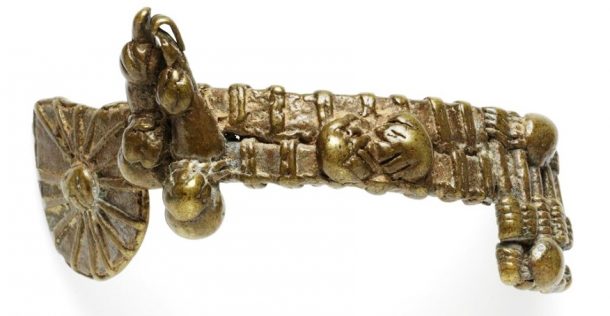
As powerful traders of gold and enslaved people, the Asante were able to import European firearms to maintain and extend their rule. This weight is in the form of a miniature machine-gun cartridge belt and is a modified version of those carried by Europeans around this time. These cross-cultural items entered Asante folklore and cartridge belts came to symbolise resourcefulness and readiness: ‘The gun cartridge-belt of Akowua [a warrior] has never been known to lack bullets.’ This weight was bought in 1971 from a London art dealer.
The museum has benefitted greatly from the advice on content and language from Professor Olivette Otele, Professor of History at Bath Spa University and Vice-President of the Royal Historical Society, S.I. Martin, independent historian and author of Britain and the Slave Trade (1999), and Dr. Peter Adjaye (AJ Kwame), artist and musician. Their input was enabled by Janet Browne in V&A Learning, who has also given much advice and support on content and texts.
Asante Goldweights will be on show in the Metalware Gallery for the foreseeable future. To find out more about the Asante gold and goldweights in the V&A’s collection, see here.
When a shield wears out, the framework still remains. (What we do now will leave a legacy.) – Asante proverb
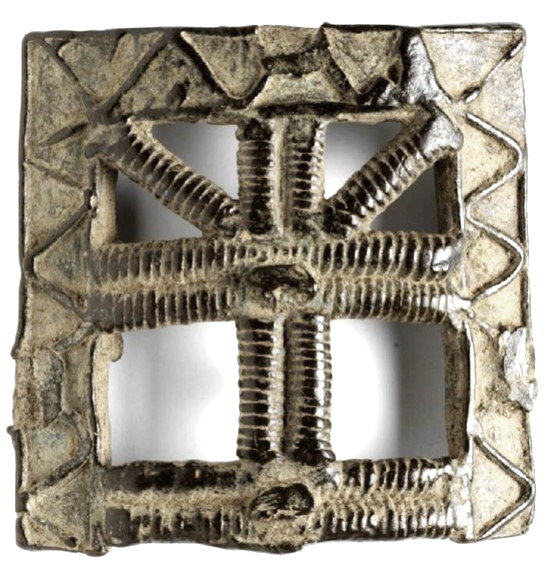



Is the Asanti Goldweights exhibition still on view at the V and A?
Esther Marie Smedvig
Is it possible to view the Asante (Ashanti) collection at the V and A between October 13 and November 1, 2023?